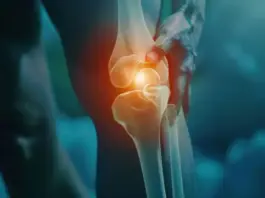In the rush of sports fields and city streets, one misstep can blur the line in the debate of Fracture vs Ligament Rupture. Both strike fast and halt movement instantly, yet their damage runs deep in different ways.
While one cracks through bone, the other silently snaps the tissue holding joints steady. Knowing this difference marks the first step toward faster, smarter, and safer recovery.
Fracture vs Ligament Rupture: Identifying Key Medical Differences
Dr Ankit Jose explains that fracture vs ligament rupture cases may share swelling and sudden pain, yet they behave differently from the very first moment. A fracture creates sharp pain that rises with every small touch or gentle move, and the person often cannot place weight on the limb. A visible deformity may appear when the break shifts bone alignment, and this makes quick imaging crucial.
Doctors depend on X-rays for clear fracture diagnosis and treatment, and this helps them plan the next step with confidence. A ligament rupture causes pain around the soft tissue near the joint, and movement may still be possible in many cases. Doctors check joint stability first and then use an MRI when they need to grade the tear before planning ligament rupture recovery tips.
How RICE Helps Manage Pain, Swelling, And Inflammation?
RICE stands for rest, ice, compression, and elevation, the first defense against pain and swelling. Stopping activity gives bones and ligaments time to begin repair naturally. Ice applied for 15–20 minutes every hour soothes inflammation and numbs soreness. Compression using elastic bandages controls swelling but must not stop circulation.
Elevating the affected limb above heart level helps fluid drain away, easing pressure. Following RICE properly supports both fracture diagnosis and treatment phases and early ligament rupture recovery. When used early, it prevents stiffness and limits further tissue injury. Still, not every pain stops with RICE alone; some need deeper care.
When RICE Fails And Medical Help Becomes Essential?
When pain persists, swelling rises, or movement stops, quick medical attention becomes vital. Numbness or joint instability signals deeper damage. A doctor checks whether it is a fracture vs ligament rupture through touch, imaging, and early analysis.
Timely fracture diagnosis and treatment help bones align well, while ligament tears need guided therapy and careful rest. Ignoring symptoms risks lasting weakness. Quick consultation shortens recovery time and prevents strain, allowing the body to rebuild strength once pain begins to ease.
Treatment Options Supporting Long-Term Healing And Recovery
Doctors choose treatments depending on how the injury behaves during the first few hours. A fracture often needs a cast, splint, or surgery when bone pieces shift out of place. A ligament rupture responds better to physiotherapy, guided bracing, or reconstruction for deeper tears.
Doctors track healing week by week and adjust every step. These decisions keep fracture vs ligament rupture care accurate and reduce complications so the joint and bone return to strong, stable movement after steady attention.
Recovery from any injury blends correct diagnosis, mindful therapy, and steady effort. Recognizing fractures and ligament ruptures early restores strength, prevents setbacks, and keeps life moving smoothly again.
Disclaimer: This content, including advice, provides general information only. It is not a substitute for a qualified medical opinion in any way. The methods and claims mentioned in this article should be considered as suggestions only; DNP India neither confirms nor denies them. Always consult a doctor before following any such suggestions/treatments/medications/diets.



